We all know ace-king (AK) is a better hand than ace-jack (AJ). But you might be surprised how much better AK is. I will show you my exact winrates with a mix of 6max and full ring texas no limit Holdem games. I played over 5 million hands.
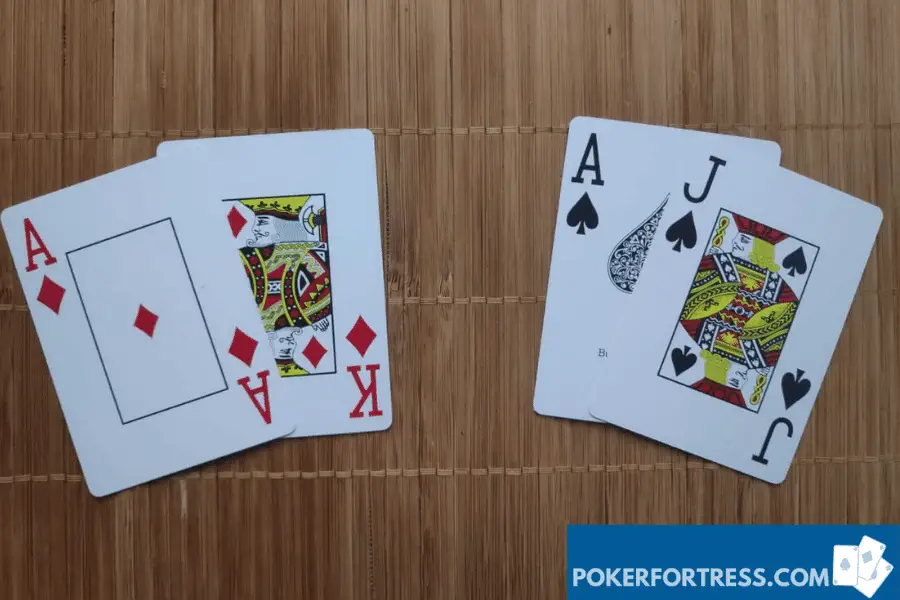
And from the graph below, you can see that AK makes you a lot more money. AJ is still a winning hand, and you should be opening from most positions, except for early position in full ring games. But AK is entirely on another level. Let’s have a look at different possible poker scenarios.
| AJ and AK equity | Broadways | AA | 99 | 98s | |
| AJ (suited and offsuit) | 53.7% | 9% | 29.2% | 45.2% | 59.8% |
| AK (suited and offsuit) | 63.4% | 8% | 44% | 45.4% | 61% |
AK vs. AJ preflop: Different approach
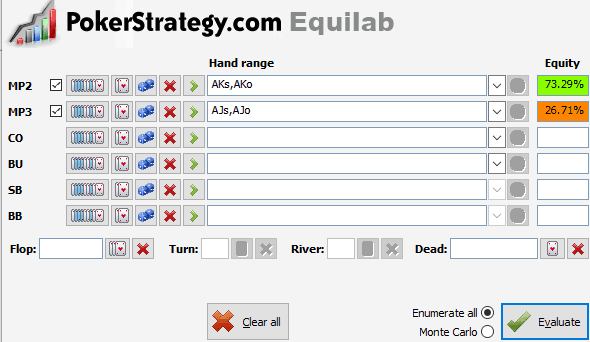
Ace King is open from any position on the table. The majority of the time, it is good enough to 3bet preflop with. It is in the top 3.5% of hands, even a top 2.5% hand if we hold ace-king suited (AKs). 3betting the hand for value builds the pot, and often players call with worse hands, so we can dominate opponents postflop.
Against very aggressive people that 3bet or 4bet a lot, AK| can even be a profitable 4bet and stack off-hand preflop. It is a real money maker hand that provides steady wins.
Ace Jack, on the other hand, is folded from the early position if off suited, and a fold against early position opens. Ace Jack suited (AJs) is still a raise preflop from all positions, but it isn’t as good as AK. We will not be 3betting this hand that often. And we are certainly not prepared to stack off preflop with this hand – vast majority of times this would be a huge mistake.
Preflop, Ace-King is a clear winner.
Ace King vs. Ace Jack postflop: Which plays better
Postflop, the situation doesn’t change much. Ace King is still a better hand more often; let’s check why.
Ace King is a good hand to have postflop
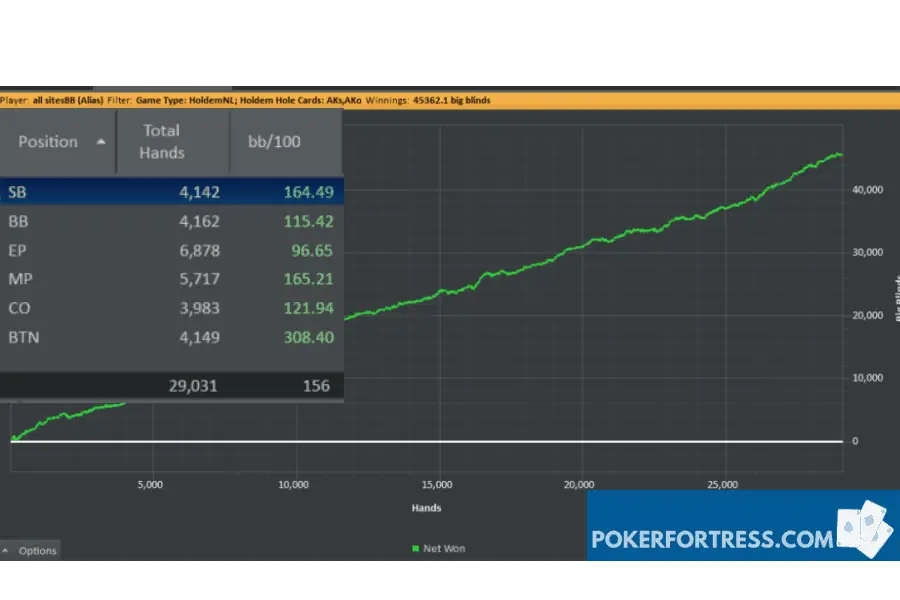
Non-pair hands will hit a pair by the river half of the time.
Chances to hit top pair or better on the flop with AK is around 33%.
So ⅔ of the time, you will not have a pair yet on the flop. But when you do hit top pair on the flop with AK, it will be top pair with top kicker. This allows us to value bet several streets, where we get paid by top pairs that have a lower kicker. We have a chance to hit the nut flush if we have AKs. Not to mention, we can apply aggression on dry flops when we miss, and bluff with our hand.
On most ace high or K high boards, we go for at least 2 streets of value, and if it is a 3bet pot, then probably you can play for stacks. Hands like KJ, KQ, AQ, AJ, etc. will have a hard time finding a fold against our bets, as hitting a top pair with 2nd and 3rd kicker is still a decent hand in Texas Holdem.
On very draw heavy flops like 789 (2 spades), we should be just giving up, as bluffing on such board will just cost us money, if we don’t have the nut flush draw, of course.
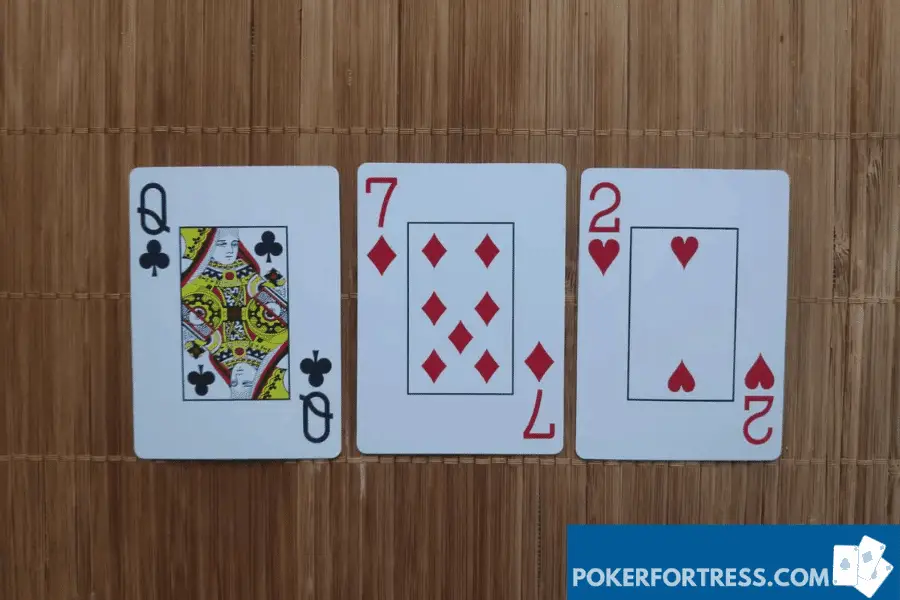
On dry boards, for example, Q27r (rainbow), we can apply aggression and bluff. We can even hit any K or A on turn or river to improve.
When we have some draw but no made hand yet, we can go either way. Taking a free card is fine if betting and getting check-raised would be bad, as we need to fold and give up our draw equity.
Ace King is a good hand, and as you can see from the graph, winrate is pretty consistent, with no big swings.
Ace Jack does fine, but that’s about it
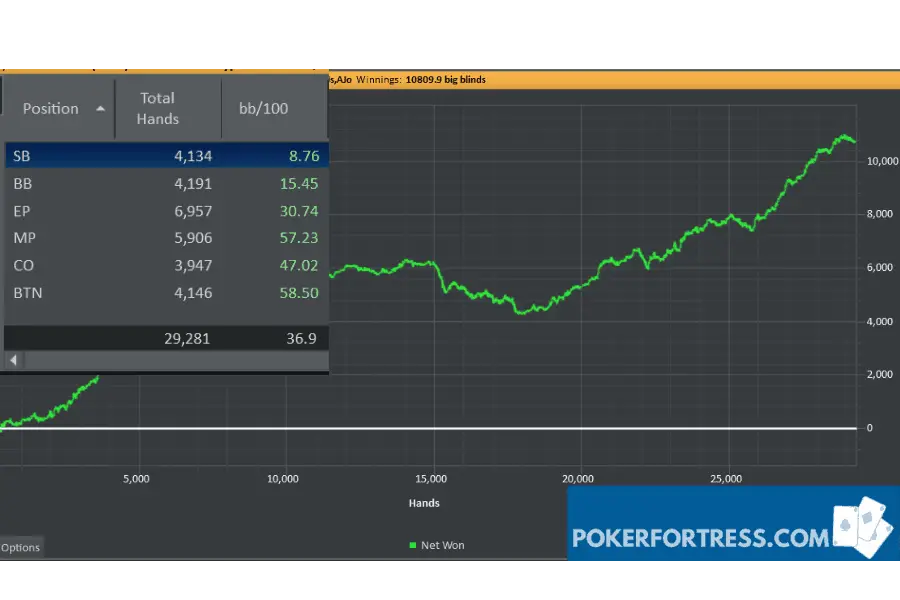
With Ace Jack, we will not hit top pair top kicker all the time.
But our decent kicker on A high flops still allows us to value bet our hand. We will get paid off by draws, weaker aces, and some weaker pairs. When we hit a jack, we need to be a bit more careful. There could be K or Q on turn and river, which would make our hand not as strong. Also someone passive player could be holding an overpair, that they decided not to 3bet preflop with.
The same as for AK, we need to give up on draw heavy boards. And dry flops are an excellent candidate to start bluffing.
From the chart, you can see a clear difference in winrate compared to Ace-King. While still profitable, our profit will be a lot smaller.
Difference between AJs (suited) and AJo (offsuit) is huge
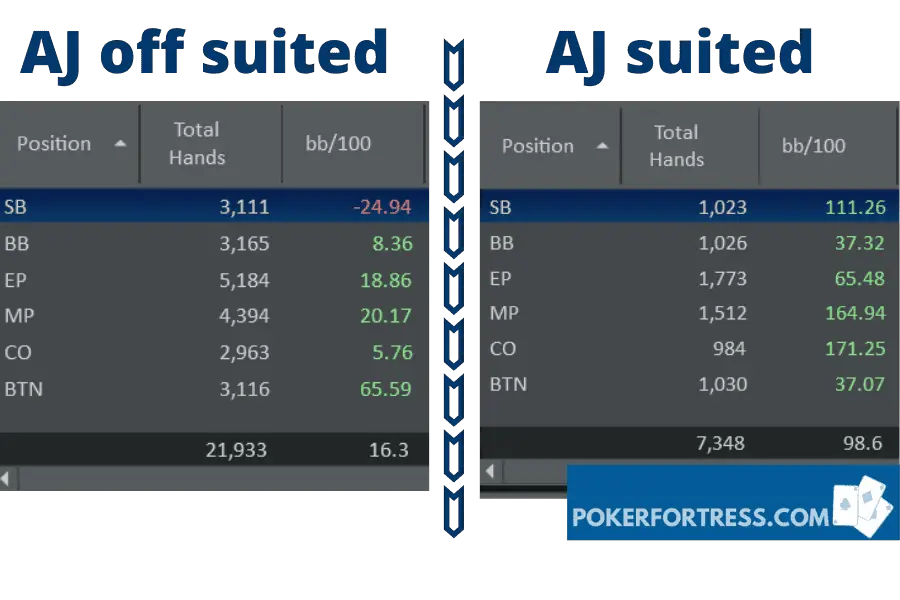
Look at the difference of my winrates when I hold AJs and when I have AJo. The difference is enormous. One is close to 100bb/100 winrate, while the other one is several times smaller. Due to smaller winrate, there is also more variance involved, and the graph doesn’t go up as smoothly as it does for AJs. That is also the reason my overall chart for AJ doesn’t look that smooth anymore, despite 30bb+/100 winrate.
This will be the case for aces with lower side cards as well.
It is quite common that those off suited hand combinations are not profitable anymore, while the suited counterpart is still making us a nice profit.
This is all because we can semi-bluff more often when we get a flush draw or even better, value bet with the nut flush.
Multiway pots
By now, it comes as a no surprise. AK does better in multiway pots also. It hits the bigger two pairs. But for both hands and as a general rule in multiway pots, the correct approach is not to be bluffing in multiway pots. The chance that at least some player has hit something is too high.
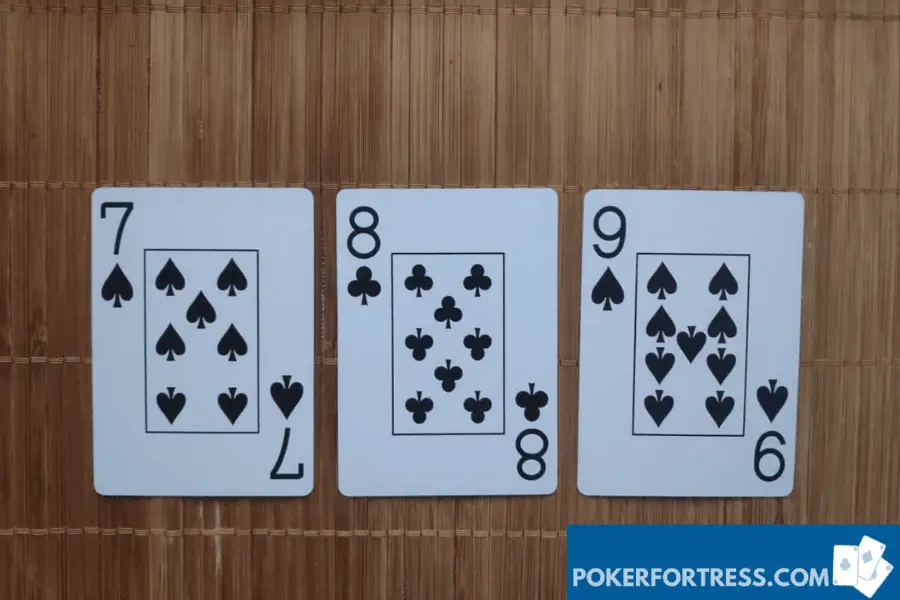
Instead, you should be focusing on value bet properly when you hit your strong hands. I see many players, even on low stakes, to telegraph their hand. They would bet pot every time on the river with nuts. When maybe it makes more sense to go for a bit smaller sizing and get called by more hands. Then again in some spots, I would go for overbet shove, where some people might go for ⅔ value bet.
All of this comes with years of experience and playing many hands. And of course, discussing the strategy with better players than I am.
There is one scenario when having AJ is better
In one particular situation, it is better to have ace-jack than ace-king. This is the case only for suited hands.
Imagine the following scenario: We hit a nut flush with AKs. Now nobody can have second nuts. We hold the K ourselves. So it is better if we have AJ instead. This means that someone else can have 2nd nut flush. And 2nd nut flushes are most likely to stack off. Lower flushes might even find a fold to our huge bets on all 3 streets. But 2nd nut flush will rarely fold.
Of course, AK is still better for all the other typical postflop scenarios, where kickers matter. Flush vs. 2nd nut lush will not happen that often, especially compared to top pair better kicker, vs. top pair lower kicker scenarios.
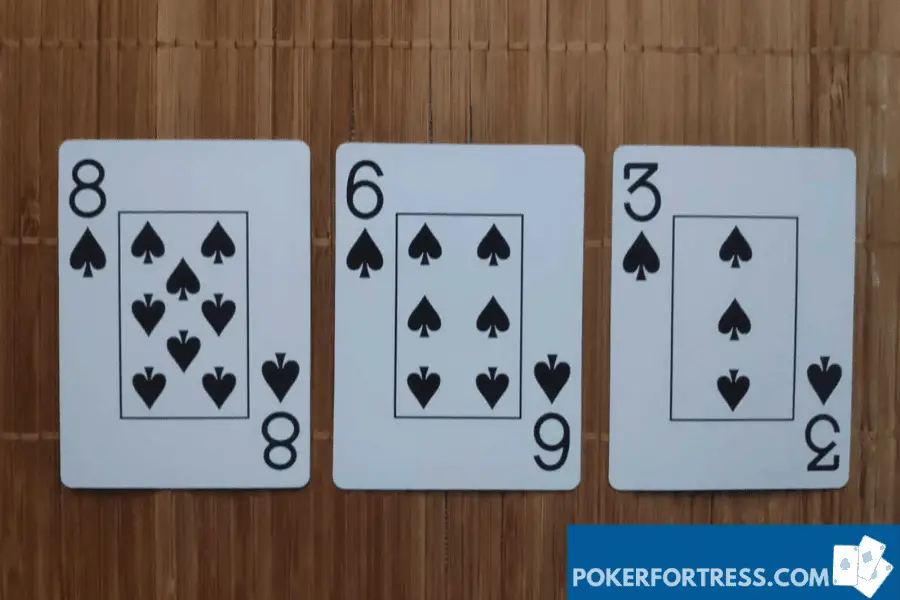
Conclusion
Now you know how much better Ace-King is compared to Ace-Jack. It is better at all these scenarios:
- AK is better preflop, it meats more hands, and can apply more pressure.
- AK is better postflop. It has a better kicker when we hit top pair. It hits bigger two pairs
- AK is better in multiway pots. Again, better two pairs are really valuable in multiway scenarios.
One scenario where having AJ is better:
- If both hands are suited, and we hit a nut flush. Then having AJ is better as someone can hold second nut flush.
You also know what kind of winrates you can expect with each of those hands. Ace king is all around better, but AJ is still a winning and playable hand, we just need to be a bit more careful with it.




